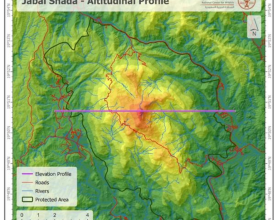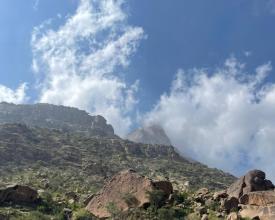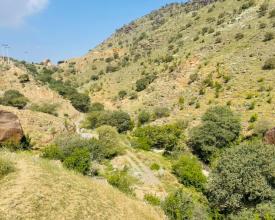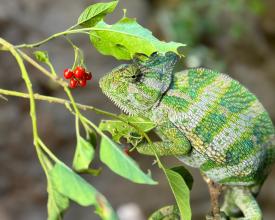Jabal Shada Protected Area - Where Nature and Communities Thrive Together
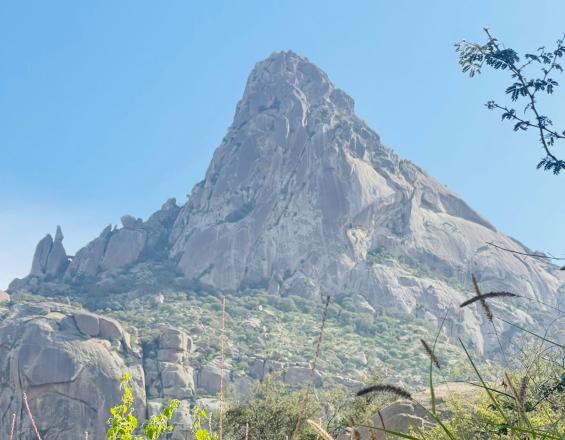
Jabal Shada is an isolated twin-mountain granite massif with spectacular scenery characterized by jagged spires, pinnacles, and traditional agricultural terraces. Located in the Al-Baha region in southwestern Saudi Arabia, it supports exceptionally rich floral diversity (nearly 493 recorded plant species) and traditionally important highland crops notably Shadawi coffee. The mountain is both an ecologically isolated element and a cultural landscape. It was declared as a protected area in year 2002 to secure unique biodiversity while supporting local livelihoods and providing nature-based tourism opportunities. Recent management planning emphasizes biodiversity monitoring, community partnerships (including agricultural support and farm-experience tourism), and identification of hiking/ecotourism trails to deliver conservation and socio-economic benefits.
Context
Challenges addressed
Jabal Shada protected area encompassing an area of 77 km2, along the mountain massif (Shada Al-A‘la ~2,200m) that forms an outlier to the main Sarawat chain essentially a separate mountain block that runs roughly parallel to the Sarawat mountains but has its unique geology, microclimates and valleys. This isolation has created a rich assemblage of woodland and valley flora and distinct microhabitats. Botanical surveys record ~493 plant species in the Shada massif (including pteridophytes and a few gymnosperms), making it one of the most floristically important highland sites in southwestern Saudi Arabia. Put in national context, Saudi Arabia’s flora totals roughly 2,500 flowering plant species, so Jabal Shada contains a very high local proportion of the Kingdom’s plant diversity (~20%). However, with the progression of urbanization, the area’s biodiversity had been increasingly affected before declaring it as a protected area.
Location
Process
Summary of the process
The key success factors at Jabal Shada are interconnected and mutually reinforcing. Protected area designation and strategic planning provide the foundation upon which all other actions are built, ensuring a clear framework for biodiversity protection and community engagement. Baseline biodiversity surveys supply the scientific evidence needed to prioritize habitats, guide management decisions, and align conservation actions with ecological needs. Strong community partnerships complement these efforts by embedding conservation within local livelihood systems—revitalizing terraces, supporting Shadawi coffee, and reducing harmful land-use practices. Ecotourism development builds on both the ecological knowledge and community involvement, creating sustainable revenue streams while directing visitors along planned, low-impact routes. Continuous monitoring links back to each component, allowing adaptive management that refines planning, livelihoods initiatives, and tourism development. International recognition as a candidate bioclimatic refugia further strengthens all pillars by validating the site’s global importance and supporting long-term protection efforts.
Building Blocks
Protected area designation & planning
Jabal Shada was declared a Special Nature Reserve (IUCN Category Ia) in 2002, following a reconnaissance survey conducted in 2001 by the former National Commission for Wildlife Conservation and Development (NCWCD). After establishment of the National Center for Wildlife (NCW), a new management plan was developed (meant to be updated after every 5 years) which integrates biodiversity protection with local livelihoods supporting Shadawi coffee cultivation, community-based development, ecotourism, and regular biodiversity monitoring to ensure long-term conservation of this unique mountain ecosystem. Jabal Shada was also registered on the world database of protected areas (WDPA).
Baseline biodiversity surveys.
Botanical inventories (field surveys and literature synthesis) established the species checklist (c. 493 spp. Of plants) and identified candidate Bioclimatic microrefugia and priority plant assemblages for protection and monitoring. Faunal surveys involving different taxa have also been conducted to build an integrated monitoring program. The protected area is also rich in endemic avian species. Out of 17 listed species, 7 species rare Arabian endemic birds. Large flocks of the endemic Arabian waxbill Estrilda rufibarba have been recorded around settlements and coffee fields. A total of 1408 invertebrate species have been reported from Jabal Shada which includes 45 endemic specie
Community partnership & livelihoods support
Conservation measures were designed and implemented in close coordination with local communities. Interventions included the rehabilitation of ancient stone-walled agricultural terraces and the revitalization of traditional cultivation systems, including coffee and fruit orchards. Additional actions involved improving agricultural practices, providing technical assistance and supporting and promoting Shadawi coffee (a long-standing local crop), along with market facilitation, collectively strengthening local livelihoods while reducing damaging land-use practices.
Significant Plant conservation area (IPA candidate)
Jabal Shada has been highlighted in regional IPA assessments and national IPA screening (CMEP / Plantlife IPA work) as a provisional Important Plant Area because of its high species richness, relict and range-restricted species and role as a montane refuge. The site supports 63 endemic plant species that are Afrotropical relicts. The site is therefore a priority for in-situ plant conservation and monitoring. Plant species endemic to Jabal Shada include Tarenna graveolens subsp. arabica and Euphorbia sp. Aff. Parciramulosa. Jabal shada was declared as a protected area and is being nominated as Important Plant Area to conserve the unique floral diversity of the area.
Conserving the area as carnivore habitat
The rugged, broken terrain of Jabal Shada is considered suitable leopard habitat and is listed among areas that were prioritized for conservation for the Arabian leopard (Panthera pardus nimr). The Arabian leopard is Critically Endangered and severely fragmented across the Peninsula; while confirmed modern records inside Saudi are rare to absent, Jabal Shada remains important as potential leopard habitat and for connectivity in regional planning. The PA also hosts several other mammal species including mesopredators like Red fox, caracal, striped hyaena, Arabian wolf, and genet. Management therefore includes measures to protect mammal habitat and monitor any evidence of remaining individuals of Leopards. Measures where also taken to mitigate retailiatory killings of carnivores by raising awareness of localls and working closely with them.
Monitoring & adaptive management
A regular biodiversity monitoring program for vegetation assessment, targeted plant species monitoring, camera-trap surveys for medium/large mammals, and ecosystem health indicators — was established to track outcomes and allow adaptive actions. The management plan places monitoring at the core of decision-making.
International recognition as a candidate bioclimatic refugia site
Jabal Shada has been proposed as a candidate bioclimatic refugia under the UNESCO framework, recognizing its exceptional role as a refuge for mountain biodiversity and its importance for understanding climate resilience in the Arabian Peninsula. Jabal Shada has been highlighted in regional IPA assessments and national IPA screening (CMEP / Plantlife IPA work) as a provisional Important Plant Area because of its high species richness, relict and range-restricted species and role as a montane refuge. The site supports 63 endemic plant species that are Afrotropical relicts. The site is therefore a priority for in-situ plant conservation and monitoring. Plant species endemic to Jabal Shada include Tarenna graveolens subsp. arabica and Euphorbia sp. Aff. Parciramulosa.
Impacts
- Plant conservation: Field inventories have improved knowledge of species distributions and identified priority patches for in-situ protection and restoration.
- Livelihoods: Support to coffee growers in terms of technical assistance, branding and tourism linkages has created alternative income streams and elevated the cultural value of mountain agroecology while strengthening the connection of locals to the protected area.
- Ecotourism product: Identified trails and farm experiences (guided hikes, village heritage routes, coffee workshops) provide sustainable visitor opportunities while channeling tourism benefits to local communities.
- Conservation monitoring: Regular monitoring programs now provide baseline trend data to adapt management (e.g., enforcement patrols, restoration sites, invasive species control).
Beneficiaries
- Local communities (income from sustainable agriculture, tourism services and capacity building).
- Species (plants, herbivores and carnivores like Arabian leopard)
- Researchers and educators (long-term monitoring datasets, new botanical records).

